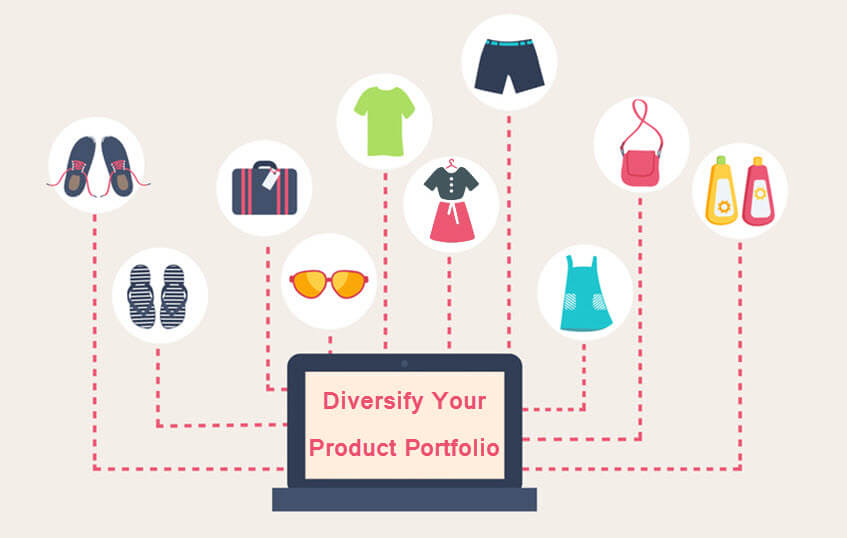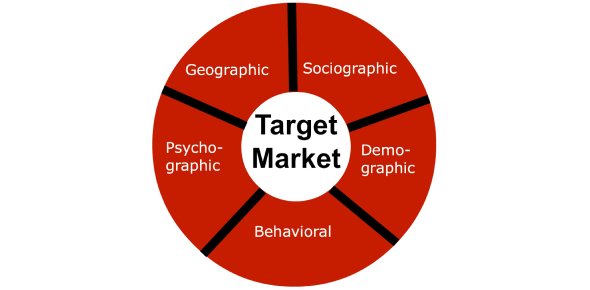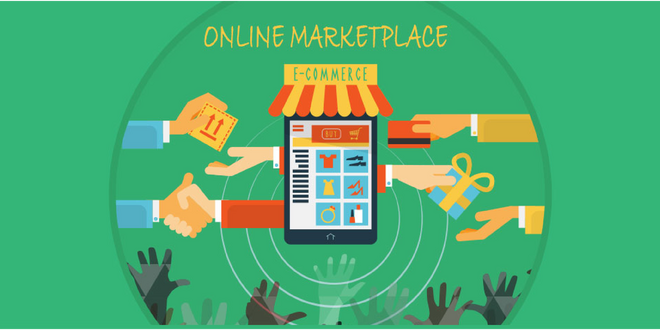Marketplace businesses (so-called multi-vendor marketplace) have been growing bigger and more prominent recently with the development of the Internet, technology, etc. Therefore, there are many marketplace businesses appearing in both the local and global markets.
To catch up with the trend in today’s world, starting a marketplace business is a big opportunity to earn money. Today, we want to provide some information about:
- Marketplace business model definition
- Marketplace business model: B2B, B2C & B2B2C
- Reasons why the marketplace is a trend
- Key points to start an online marketplace business
- Magento marketplace theme review
Let’s get started!
Table of Contents
What Is The Marketplace Business Model?

Before any definition, we want to refer to some of the most popular marketplace worldwide, such as Amazon, Airbnb, Walmart, eBay, Uber, etc. We can see some similar characteristics among these companies to define the marketplace business model.
A marketplace acts as an intermediary between the company and its customers. Usually, a marketplace is a website or a mobile app or even both, working as a tool for customers to order goods and services.
A notable point here is that a marketplace business doesn’t own any products or services. The only outcome of the company is the platform that they provide for customers. All the products will be from many other suppliers in the market.
There are 4 types of the marketplace:
- Vertical marketplace: Same variety of products offered by various merchants
- Horizontal marketplace: Different products with similar characteristics
- Global marketplace: Different kinds of products from multiple merchants with no limitations
- Hybrid marketplace: Products owned by the company and products from other suppliers
Marketplace Business Model – B2B, B2C & B2B2C

On marketplaces, companies can offer goods or services in the B2B and B2C sectors. So, what are these 2 sectors’ purposes?
B2B Model

B2B is short for Business to Business. We can simply understand B2B as an online business model between companies and companies, all the trading activities between 2 companies on e-commerce exchange.
In other words, B2B can be understood that a company buys products from a supplier, and then, they might sell it back to customers or for some other purposes.
Customers in B2B are businesses, which means that orders are usually in bulk. In that case, transactions can not be fulfilled immediately. In some specific cases, contracts needed to be made to guarantee the rights and obligations between 2 parties.
B2C Model

B2C (Business to Customer) is relatively easy to understand as it is a familiar model. Sale transactions occur on the Internet, and customers, in this case, are individuals who buy goods or services for regular consumption purposes.
More specifically, when you order a pair of shoes on any store’s website, that is the B2C model. You don’t need to have any further transactions after purchasing. You can go through the website and consider the goods’ prices and characteristics to make a decision.
Because of its simple feature, B2C is the most common model to start the business.
B2B2C Model

B2B2C (Business to Business to Customer) is the combination of those 2 models above. And the marketplace business model is a typical kind of B2B2C.
There are 3 entities in B2B2C:
- The first B: Businesses that own goods or services
- The second B: Businesses that are in charge of distributing products
- C: Individual customers
Some of the most popular B2B2C businesses worldwide are Amazon, Alibaba, Taobao, eBay, etc.
Advantages of Running An Online Marketplace

There are many reasons why the marketplace is so popular at the moment. According to research from The Rise of Global Marketplace, customers have spent $1.47 TRILLION on online marketplaces, nearly half of all global online sales.
So we can say that the online marketplace is an ample opportunity in recent days. And there are many reasons for this trend. Some of the most apparent benefits are:
Products Diversification

One of the most crucial points is that you can sell the broadest types of products even though your business doesn’t own any of those. As a result, you have many revenue sources to gain, and you can quickly generate profit.
Cost-cutting Solution

As we have mentioned, a marketplace doesn’t own any goods. Therefore, the business doesn’t have to spend money on hiring a warehouse or storage for goods, which is quite costly. In this way, you can save a lot of money to invest in other steps.
Data Generation

With typical B2C businesses, it is common to gather data from customers. However, with a marketplace, not only customers’ data, but the enterprise can also generate data from sellers. These data can be sold or utilized when setting foot in a new industry.
Key Points to Start An Online Marketplace
Starting a marketplace is quite similar to starting an ordinary online business. However, because it is much broader than just normal business, there are some elements you need to pay attention to.
Research about & Decide Your Target Market

To come up with a business plan, researching customers’ needs is compulsory. According to CBInsights, the no.1 reason for startups’ failure is “no market need.” Therefore, especially to marketplaces with a wide range of products, the target market is a must.
Decide Your Main Product Types

At the starting point, it isn’t easy to manage a wide range of products. It would be best if you narrowed down your product types. And thenceforth, you can also narrow down to decide your primary customer’s segmentation in the short term and expand it little by little in the long term.
Let’s take Amazon as an example. Initially, Amazon was famous for selling books. The company didn’t sell anything else besides this product. But from time to time, they started to expand their product range. And they have succeeded in being one of the biggest eCommerce businesses.
Build Up A Website

A platform can never be overlooked when starting an online business. You can decide whether it is a website or a mobile app or both. Nowadays, there are many platforms to choose from, including Magento, Shopify, WooCommerce, etc.
Undoubtedly, the very first step to consider is how to design your website. A good design is extremely beneficial when doing online business as it will be your store’s image. When coming to you for the first time, customers will consider whether it is a good impression or not.
There are 3 main options to design your store:
- Creating on your own: This option is limited because not many people know about designing, especially designing a website.
- Hiring professional designer: Many eCommerce solution providers offer design services.
- Using premade themes: Premade themes are becoming common among eCommerce as it is cheaper, convenient, fast, and easy to configure.
And among those 3 options, now we want to focus on the common one, which is premade marketplace themes, particularly Magento marketplace themes. Let’s take a look at the section below for more information.
Top 3 Magento Marketplace Themes Review
Among eCommerce platforms in the market, Magento is one of the most popular one, which is being used by over 250,000 sites globally. That’s why we want to review Magento themes in this section.
We will give you a detailed review of the top 3 Magento marketplace themes. These themes have been bestsellers recently with many optimal features. Let’s check it out!
#1. Martfury – Magento Multi-Vendor Marketplace Theme by MageBig – $129

Compatible with: Magento 2.2.x – 2.3.x – 2.4.x
Key features:
- 6+ unique homepage layouts
- Responsive design
- High-speed performance
- Flexibly reuse elements between layouts
- Ajax search
- RTL (Right To Left) support
- Multiple colors
- Many supporting extensions included
- Product zoom
- Built-in Mega Menu
Review:
The first recommendation is at the top of bestsellers on Themeforest. Martfury is a complete design for your Magento marketplace with 6 different homepage designs.
You can quickly change your store’s appearance with simple manipulations. Besides, it is also compatible with many other optimal extensions. Martfury has been rated 4.88/5 stars on average by actual users.
#2. MultiStore – Magento Multi-Vendor Theme by NetbaseTeam – $94

Compatible with: Magento 2.2.5 – 2.2.6 – 2.2.7
Key features:
- 6+ homepage layouts
- 15+ unique pages
- 10+ header styles
- The new multistore core theme
- Fully responsive design
- Powerful admin panel
- Quick View
- Multi-currencies
- Easy to customize
Review:
Our 2nd recommendation is MultiStore, a theme designed by NetbaseTeam. NetbaseTeam is relatively familiar with its themes for various purposes, and MultiStores is one of those.
A key point here is that they include a new powerful multi-stores core theme. This core theme enables users to quickly configure header, footer, content homepage in the admin panel, and effortlessly set theme design.
All in all, this theme is one of the most highly recommended Magento marketplace themes.
#3. Mag 2 Marketplace – Theme Support Multi Stores by NetbaseTeam – $84

Compatible with: Magento 2.2.6 – 2.2.7 – 2.2.8 – 2.2.9
Key features:
- Powerful core theme
- 3+ unique homepages
- 20+ different pages
- Advanced extensions integration
- Category grid view
- CMS static block
- Product slider
- Multi-currencies
- Multi-languages
Review:
The last suggestion is also from NetbaseTeam. As it comes from the same provider as MultiStores, it also has a powerful core theme, which is extremely easy to configure elements.
The design was inspired by top marketplace brands, such as Amazon, Lazada, and eBay; hence, it is modern enough to impress customers at first glance.
Conclusion

In conclusion, the marketplace business model is an opportunity in this modern world. However, it is challenging to start, so please consider your plan carefully.
We hope that this article will help you understand more about such a kind of business model. And with Magento users, you can find the most suitable Magento marketplace theme for your enterprise.
If you want further information, please comment in the section below. We’re willing to answer.
Thanks a lot for reading!




